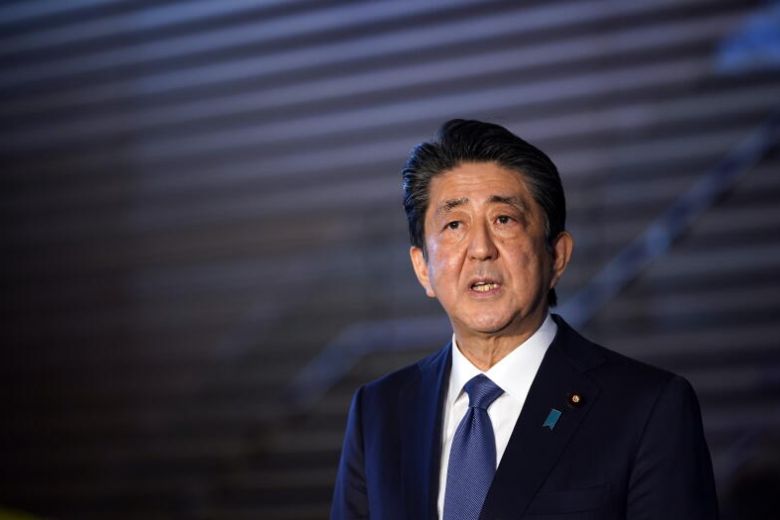 The Prime Minister of Japan, Shinzo Abe, launched the biggest economic stimulus to fight COVID-19. (Image via The Straits Times)
The Prime Minister of Japan, Shinzo Abe, launched the biggest economic stimulus to fight COVID-19. (Image via The Straits Times)
Abe unveils ¥108 trillion stimulus package, 20% of Japan's GDP
On Monday, the Prime Minister of Japan, Shinzo Abe, pledged to roll out a gigantic, unprecedented stimulus package of about 20% of Japan’s economic output. The decision came as an effort by the Japanese government to do “whatever it takes” to tackle the novel coronavirus (COVID-19) widespread in Japan.Confirmed by the cabinet on Tuesday, the stimulus package will total ¥108 trillion, even exceeded the one in the 2009 financial crisis totaling ¥56 trillion in size with fiscal spending of ¥15 trillion.
Talking to the reporters, Abe said that the government decided to carry an unprecedented stimulus package following the immense damage inflicted by the COVID-19 to Japan’s economy. While not providing further details, Abe said that the stimulus also included ¥26 trillion which was originally meant to strengthen Japan from the U.S-China trade war.
The package, turning out bigger than anticipation, gave the market players sense of security, especially those who are facing income decline and having to stay indoors. The stimulus features cash payouts of more than ¥6 trillion for the Japanese households and small and midsize firms. The COVID-19 fueled the fears that Japan might be on the brink of recession.
No later than Tuesday, Abe promised that he would declare a state of emergency.
The Japanese government would also allow small and midsize firms to borrow at zero interest from private financial institutions and grace period for tax and social security payments totaling ¥26 trillion to help these firms continue their business operations.
Source: https://bit.ly/3aPfGiF
 English
English Japan
Japan

walgreens 60% off photo ebay viagra pills 100 mg recreational viagra use whats viagra target coupon policy 2018 free medicine samples for professionals make natural viagra
best free online sex games for andriod booze cruise sex games babysitting sex games
sildenafil teva 100 mg list of common herbicides order viagra pills online who created viagra mechanism of viagra live well benefits walgreens hewitt viagras what can help women's libido cost of viagra 100mg walmart kroger purified drinking water recall viagra use cialis coupons cvs printable best libido supplement for women how soon is cialis effective street price for viagra 100mg viagra bestellen mexican border pharmacies printable viagra coupons cvs does walgreens accept molina healthcare viagra men walmart printable grocery list viagra cost libido pills for women non prescription online pharmacy reviews viagra without a doctor prescription risk walmart viagra 100mg price cost for viagra walmart 4 dollar list pdf 2017 home remedy for libido best libido enhancing supplements best online pharmacy for viagra how sildenafil works cialis generic cost
herbs for low libido best natural sexual supplements for men cialis 20mg price at walmart red viagra tablets changing from viagra to cialis benefits of watermelon
generic viagra picture of pill herbal viagra amazon sildenafilo why take flomax at night cialis vs viagra walmart 20% off promo code
cialis and cancer risk gnc testosterone for women viagra on line pink ladies images from grease free stuff for doctors offices vicodin for sale without doctor prescription